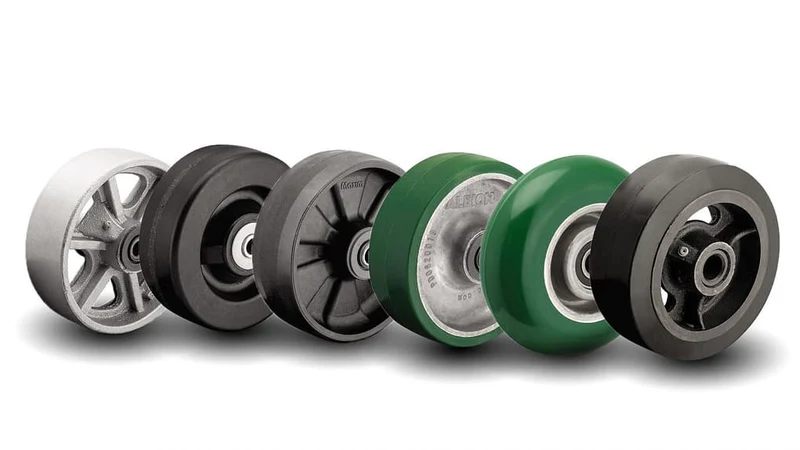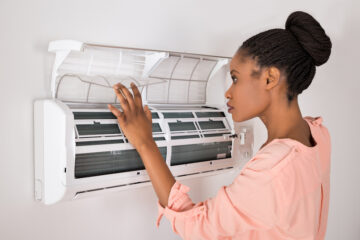Heavy-duty equipment often requires specialized components to function efficiently, and one of the most critical parts is the casters. Casters, frequently underestimated, play an essential role in mobility, stability, and safety. When used for heavy-duty equipment, choosing the right type of caster becomes even more crucial. A poor choice can damage the equipment, reduce maneuverability, and even cause workplace accidents. We will explore the key factors to consider when selecting casters for heavy-duty equipment, ensuring smooth operations and long-term durability without compromising safety or efficiency. You can also view the selection of items at Caster Central website according to your requirements.
Load Capacity: Ensuring Adequate Support for Weight
The load capacity is one of the most important factors to consider when selecting casters for heavy-duty equipment. Load capacity refers to the total weight a caster can support without failure. Heavy-duty casters are designed to handle significant loads, but not all casters are created equal. To determine the appropriate caster, you must first calculate the total weight of the equipment. Once the weight is known, divide it by the number of casters. However, adding a safety margin, usually 30-40%, is advisable to account for uneven weight distribution or sudden impacts. Heavy-duty casters come in various materials, from steel to polyurethane, each offering different levels of load-bearing capacity. Steel casters, for example, can handle extreme weights but might not provide the smoothest ride. On the other hand, polyurethane casters balance load capacity with smoother movement, making them ideal for environments where strength and smooth handling are necessary. Ensuring your caster choice aligns with your equipment’s weight can prevent failure, reduce maintenance costs, and enhance operational safety.
Terrain and Environment: Navigating Surfaces with Ease
The terrain or surface on which the heavy-duty equipment will be moved is another vital consideration when choosing casters. Casters can vary greatly in performance depending on the type of floor surface, from smooth concrete to rough outdoor surfaces like gravel or dirt. In uneven floors, debris, or moisture environments, the wrong caster type can easily become stuck or wear down prematurely. For smooth indoor floors, like those in warehouses or factories, casters with a hard tread, such as steel or rubber, offer minimal rolling resistance and require less force to move heavy loads. However, for outdoor or rough terrain, larger casters with a softer tread, such as rubber or polyurethane, provide better shock absorption and prevent equipment from getting caught on obstacles.
Additionally, environmental conditions should be considered. For example, in environments with corrosive chemicals or extreme temperatures, stainless steel or specially coated casters are ideal to prevent corrosion and degradation over time. Analyzing the environment where the equipment will be used will ensure optimal caster performance and longevity.
Wheel Material: Balancing Durability and Traction
The material of the caster wheel plays a significant role in the performance, especially when it comes to handling heavy loads and navigating different surfaces. Common materials for heavy-duty casters include steel, rubber, nylon, and polyurethane, each with advantages and drawbacks. Steel wheels are exceptionally durable and can withstand extreme weight without deformation. However, they can be noisy and cause damage to flooring if not used on reinforced surfaces. Rubber wheels offer excellent traction and are quieter, but they might not be as durable as steel when exposed to high loads for prolonged periods. Polyurethane wheels offer a middle ground—they are durable, provide good traction, and are gentle on floors. However, they can wear out faster on rough surfaces. Nylon wheels, however, are highly resistant to chemicals and extreme temperatures, making them ideal for specific industrial applications. Selecting the right wheel material ensures that your casters balance load-bearing capabilities, traction, and wear resistance, especially in environments where heavy-duty equipment is frequently moved.
Mounting Options: Stability and Flexibility in Use
How a caster is mounted to the equipment can greatly impact its stability and usability. Several mounting options are available, including plate-mounted, stem-mounted, and bolt-on casters. Plate-mounted casters are often the go-to choice for heavy-duty equipment due to their increased stability and load distribution. A large plate spreads the weight evenly across a broader surface, reducing the risk of caster failure. Stem-mounted casters, threaded or non-threaded rods inserted into the equipment, offer more flexibility in applications but may need to be more robust for handling extremely heavy loads.
Additionally, you should consider whether you need rigid or swivel casters. Rigid casters only move in a straight line, offering stability, while swivel casters rotate 360 degrees, providing better maneuverability. In many cases, a combination of rigid and swivel casters can achieve the perfect balance between control and mobility. Ensuring the correct mounting type will enhance the caster’s performance and longevity while ensuring that your heavy-duty equipment remains safe and functional.
Choosing the right casters for heavy-duty equipment is a critical decision affecting the efficiency, safety, and durability of the equipment and the workspace. We have explored essential factors such as load capacity, terrain considerations, wheel material, mounting options, and brake mechanisms, each of which plays a crucial role in ensuring the optimal performance of your casters. By carefully assessing these factors and aligning them with your specific needs, you can ensure that your equipment moves smoothly, operates safely, and withstands the demands of your environment for years to come.
Stay in touch to get more news & updates on Gossips!




